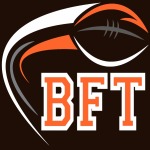Tagged: #1, 2017, A&M, browns, Cleveland, Defense, Defensive, Draft, Draft pick, End, Football, Garrett, Myles, NFL, overall, Prospects, Report, Scouting, Texas
- This topic has 6 replies, 3 voices, and was last updated 8 years, 5 months ago by
 Dawgstyle.
Dawgstyle.
- AuthorPosts
- January 2, 2017 at 7:50 pm #7215
 IceKeymaster
IceKeymasterThat is a fantastic article DS! I like how you pointed out specific plays that are worth looking at. This is the best way for all of us to educate ourselves on a player.
One thing that’s worth discussing… a lot of people have compared him to the Freak, but someone also pointed out that he has significantly shorter arms than Kearse. I don’t know how short (I guess we’ll find out at the combine) but that could hurt him in the NFL.
January 2, 2017 at 8:48 pm #7216 DawgstyleParticipant
DawgstyleParticipantHaving a significantly shorter wingspan than Kearse, whose wingspan measured 86″, is not necessarily detrimental because Kearse was truly an outlier. An article written about the 2014 by Josh Levin which appeared in Slate found that the average wingspan of NBA prospects that year was 4.8 inches longer than their height (compared to the average man at 2.1 inches longer than his height). At 6’5″ tall (77 inches), Kearse’s wingspan was a staggering 11″ longer than his height, one of the many reasons he was referred to as “The Freak”.
It is believed Garrett’s height will be in the vicinity of 6’4″ (76″), and just looking at the pictures of him I suspect that he will eclipse even the 4.8″ average of the 2014 NBA draft class. To that end, I’m not worried about a single one of his physical measurements, even if they are significantly below Kearse’s (especially considering Kearse appeared in only 3 Pro Bowls during his 11 year career). If the arms are too long, you can lose leverage, and I think a well reasoned argument could be made that Kearse’s arms were too long as opposed to Myles Garrett’s arms being too short.
818 mph. 13,723 feet. 3 second burn.
https://youtu.be/hy-3bb1Nqy0January 3, 2017 at 1:21 am #7217 mike barnesParticipant
mike barnesParticipantGarrett may be all that and more but A no one is can’t miss coming out of college b even if he is and the defense improves how many more games do we win c some want to use our first three or four picks on defense totally disreguarding the offensive side of the ball not a smart move in my opinion d we still need a QB.
January 3, 2017 at 8:17 am #7218 DawgstyleParticipant
DawgstyleParticipantGarrett may be all that and more but A no one is can’t miss coming out of college b even if he is and the defense improves how many more games do we win c some want to use our first three or four picks on defense totally disreguarding the offensive side of the ball not a smart move in my opinion d we still need a QB.
I agree that there is no such thing as a can’t miss talent. Some of the greatest college football players failed to transition to the NFL despite exceptional physical talents. The point, which I hope I made, was that his game film revealed a physical talent level that is so rare the likelihood of his success in the NFL is significantly enhanced.
To your second point, I believe that Garrett is a game changer. I believe he’s the difference between getting the 3rd down stop and not. Forcing fumbles, pressuring the QB and getting sacks or causing errant throws that lead to INTs, blocking extra point and field goal attempts (all of which he did against top notch talent like LSU and Alabama in college).
To your third and final point, just as QBs have to take what the defense gives them, so too does the Front Office have to take what the draft gives them. While I completely agree that we need a QB, but there isn’t an obvious once in a generation type talent available at that position this year. By most accounts, this draft is relatively weak at the QB position. This is why so many have discussed trading for Jimmy Garoppolo and A.J. McCarron as opposed to taking a QB in the draft.
As such, it appears as if this draft will give us the opportunity to significantly increase the overall talent level of defense if we don’t reach for a QB that probably won’t succeed at the next level (like the Bills did with E.J. Manuel) because we’re desperate. The list of potential QB next year includes USC’s Sam Darnold, Lamar Jackson, Josh Rosen, Patrick Mahomes II (who is eligible this year but has not declared yet), and Jake Browning. While our position this year certainly supports taking the best QB in this draft, there’s a strong possibility that ANY QB picked in the first round next year will be a better prospect than the first QB picked in this year’s draft. Even Mahomes II, who I believe will prove to be the best QB in this draft, is not worth more than a late second round pick because he played in an Air Raid at Texas Tech against notoriously soft Big 12 defenses.
Ultimately, the Browns aren’t going to be fixed in a single draft and taking the BPA makes a lot of sense for this franchise, even if the BPA isn’t a QB. And eventually, this regime is going to have to find a QB. Haslam is shouldering the responsibility for this season (and rightfully so), he may even shoulder the responsibility for next season. Beyond that, Hue, Sashi and Company are going to be held accountable for the product on the field.
Just out of curiosity, who would you take at QB in the 2017 NFL draft and why?
818 mph. 13,723 feet. 3 second burn.
https://youtu.be/hy-3bb1Nqy0January 3, 2017 at 9:27 am #7219 IceKeymaster
IceKeymasterThe hardest thing to contemplate is that there may be NO solution to the QB situation in 2017. Any draft capital we spend at QB this year, either drafting one or trading for one, may well be completely wasted. The scouts have to decide whether or not that’s the case. If they say there’s no QB that has top 20 QB potential available then it’s the job of Sashi and Co NOT to panic and grab one. Solidify the line, build up the defense so that our starter at least has a chance.
January 3, 2017 at 11:00 am #7220 DawgstyleParticipant
DawgstyleParticipantIce, I would assert that is always the case. Our feelings about the future are often confused with knowledge of the future, and confirmation bias constructs a reality that minimizes cognitive dissonance. We will remember the times we were right and further strengthen our view while forgetting the multitude of times we were wrong (to avoid the stress that accompanies uncertainty).
While there have been examples of truly bad QB classes (2013 comes to mind), the general consensus up until recently was that this year’s QB class would be stronger than the last (part of the reason we chose to pass on Carson Wentz at No. 2). Consider these excerpts from a quick Google search on the 2016 vs 2017 NFL QB Class:
With that in mind, should teams bypass taking a quarterback this year and wait until next year? Let’s take a look at next years projected quarterback class: Deshaun Watson, Brad Kaaya, Baker Mayfield, JT Barrett, Malik Zaire, Josh Dobbs, and Seth Russell. In that list, you have Heisman candidates, college playoff quarterbacks, and guys who’s talent is substantially higher than this years class.
Yeah, Erik makes a great point. It’s a modified way to wave the surrender flag by signing a one-year QB. In my eyes, there’s a legit case that could be made for Watson, Kaaya, and Kiel in which they provide the same amount of intrigue as this year’s “franchise QBs”. I’ll need convincing that Cook and Goff are better options than Kaaya and Watson. I think the decision of signing a holdover guy also depends on the state of the rest of the team. Cleveland can afford to “tank” with eyes set on Kaaya. The Rams on the other hand can not. If my team were years away from competing, call me crazy but I’ll set my eyes on 2017 QBs.
My point the last few years has been this: selecting a franchise QB is an art, not a science. As much as I love analytics (and I LOOOOOOVE me some analytics), no one, and I mean no one, had a higher grade on Kirk Cousins than they did on RG3. With hindsight we can tell ourselves we always knew Cousins was the better prospect, but when Washington traded into the #2 spot, no one was under the delusion that they were taking anyone but RG3. Yet it was Cousins who would go on to succeed.
As such, and I’ve discussed the fact that Packers have drafted more QBs since 1999 than we have before, you have to play the odds by addressing the position with draft picks until you hit. The higher the draft pick, the more likely the QB is to succeed, but it is not guaranteed. Look at how many successful QBs have been taken while another starting caliber QB is on the roster:
Aaron Rodger drafted while Favre was the starter
Andrew Luck drafted while Peyton Manning was the starter
Phillip Rivers drafted while Drew Brees was the Starter
Tom Brady drafted while Drew Bledsoe was the starter
Kirk COusins drafted at the same time RG3 was drafted to startThat’s not to say that’s the only way you can draft a successful QB (Mariota, Wilson, Winston, Flacco, etc.) but it is interesting that so many teams who already have appeared to answer the question at QB continue to draft QBs. It’s no coincidence.
FYI – I’m watching the TexasTechTV app in hopes of learning if Patrick Mahomes is declaring right now: http://www.texastech.com/watch/?Live=1127
Edit: Mahomes II just declared.
818 mph. 13,723 feet. 3 second burn.
https://youtu.be/hy-3bb1Nqy0 - AuthorPosts
- You must be logged in to reply to this topic.
